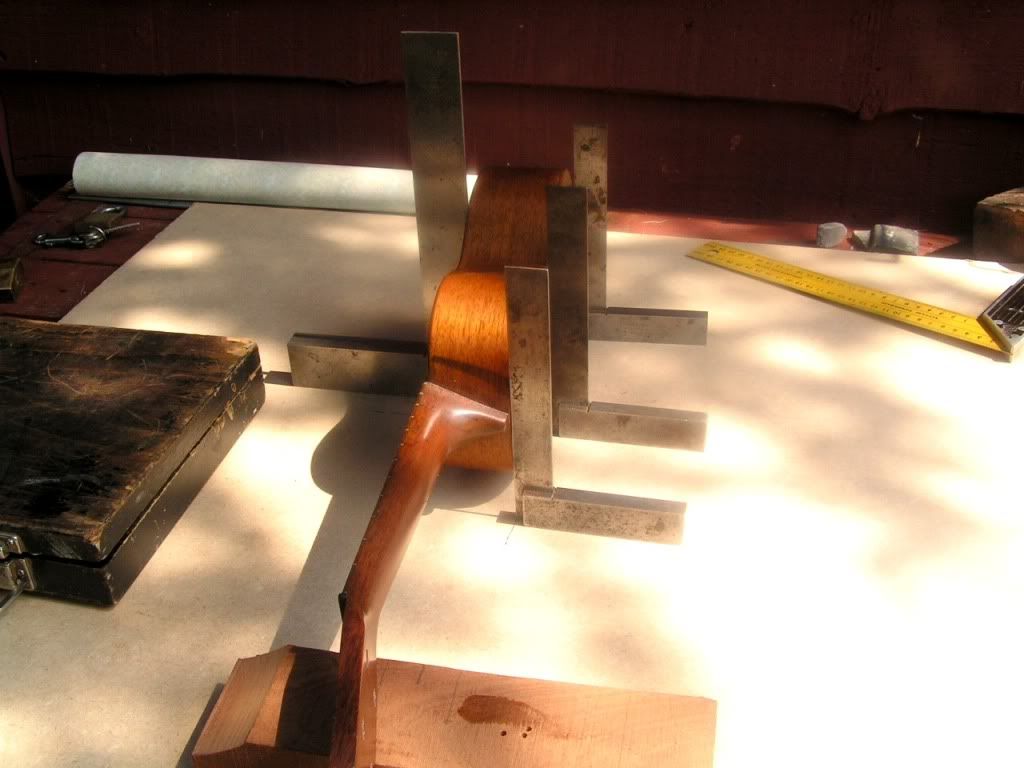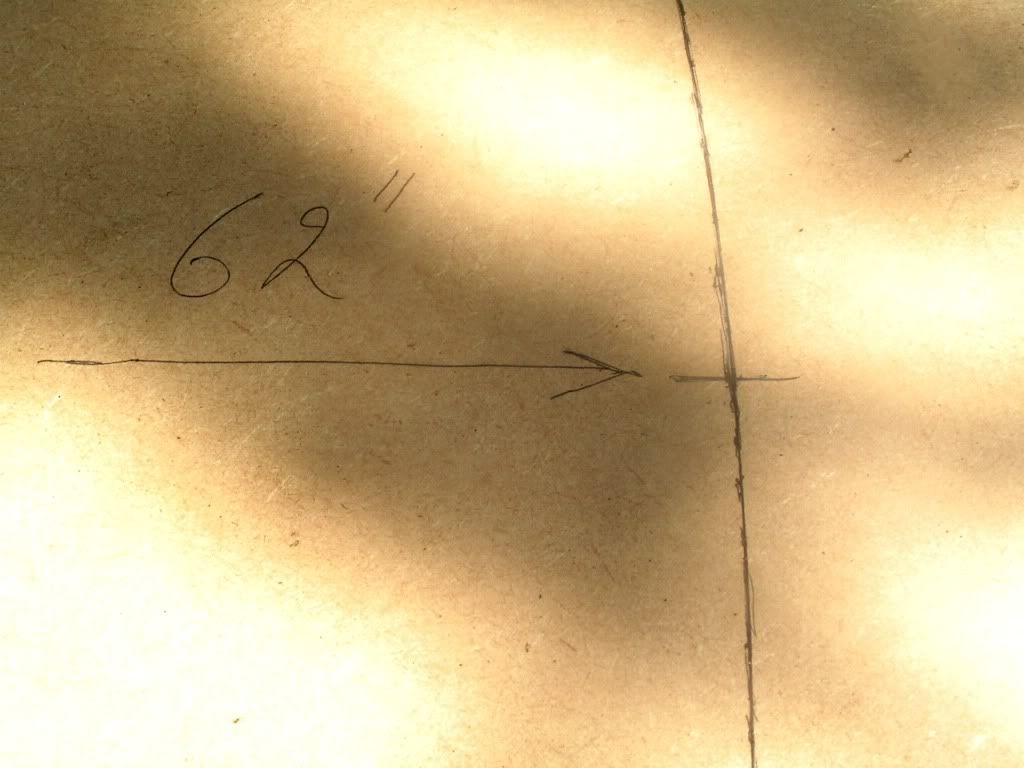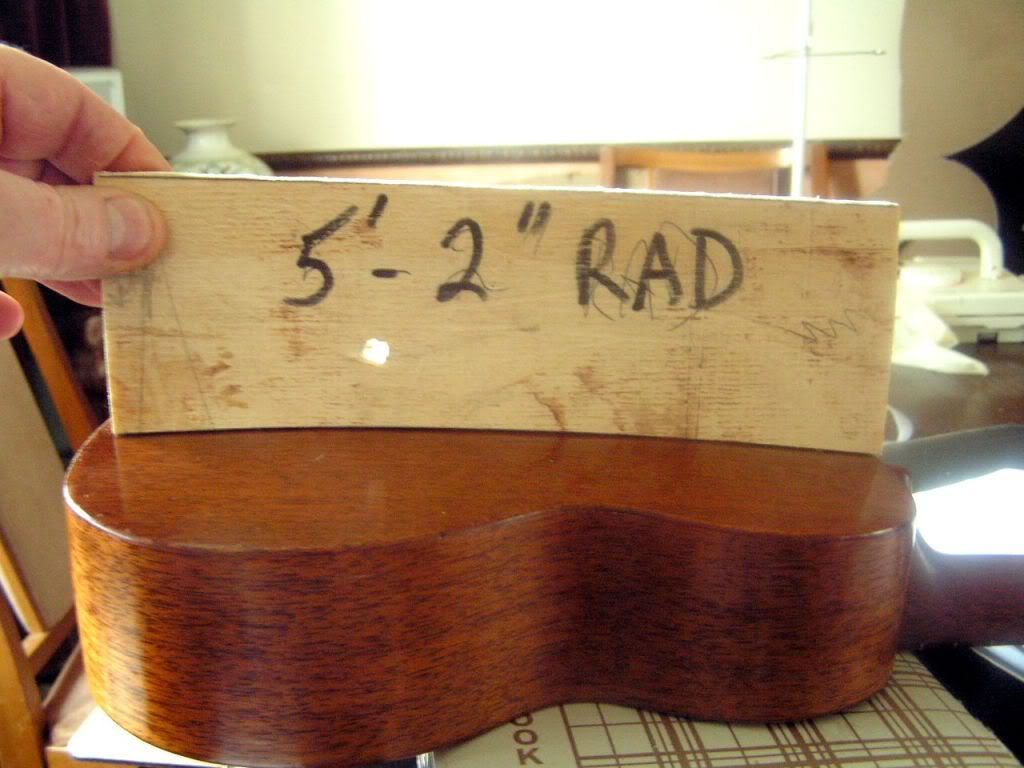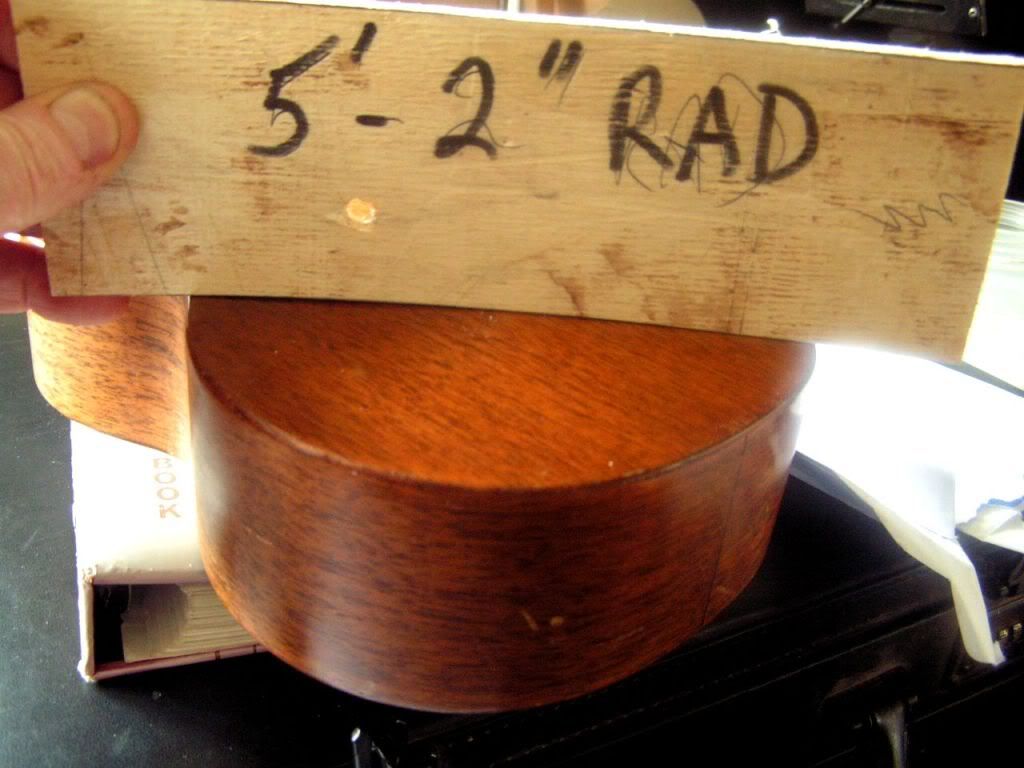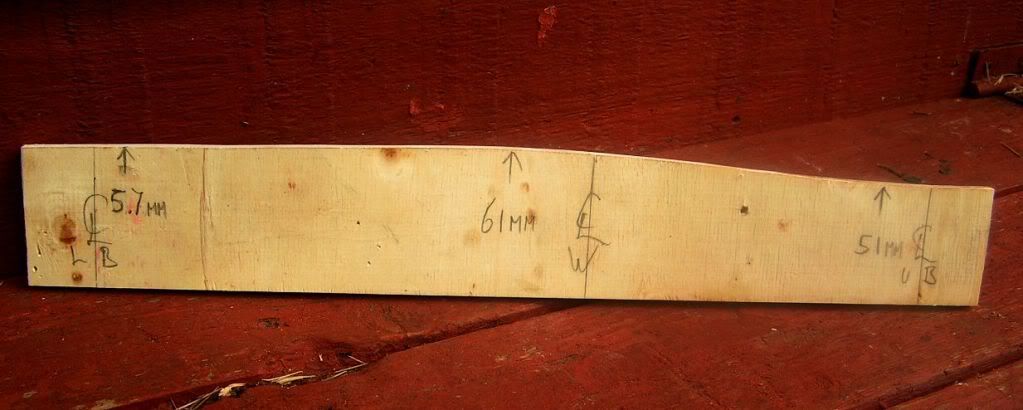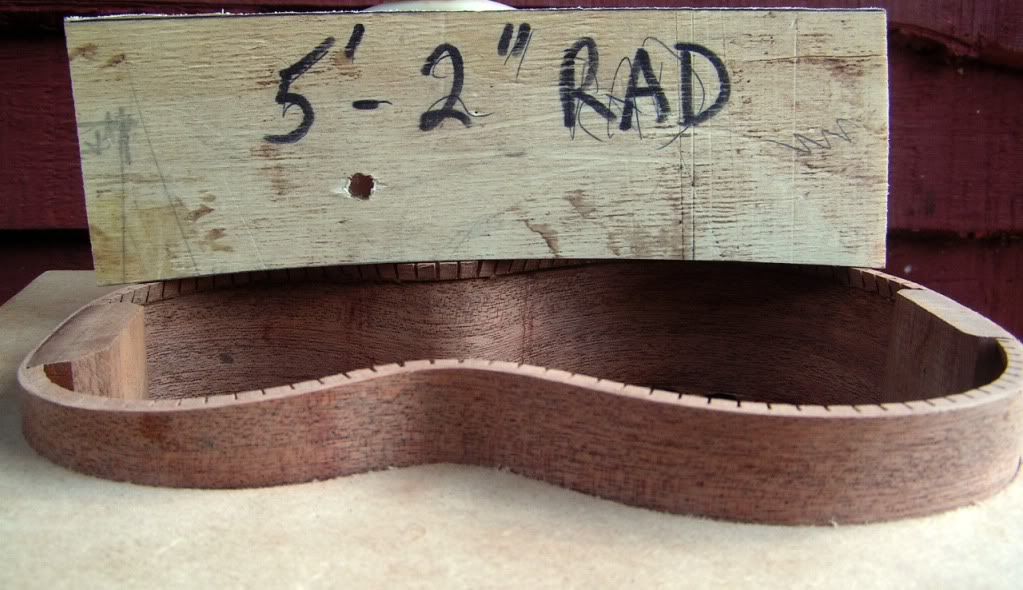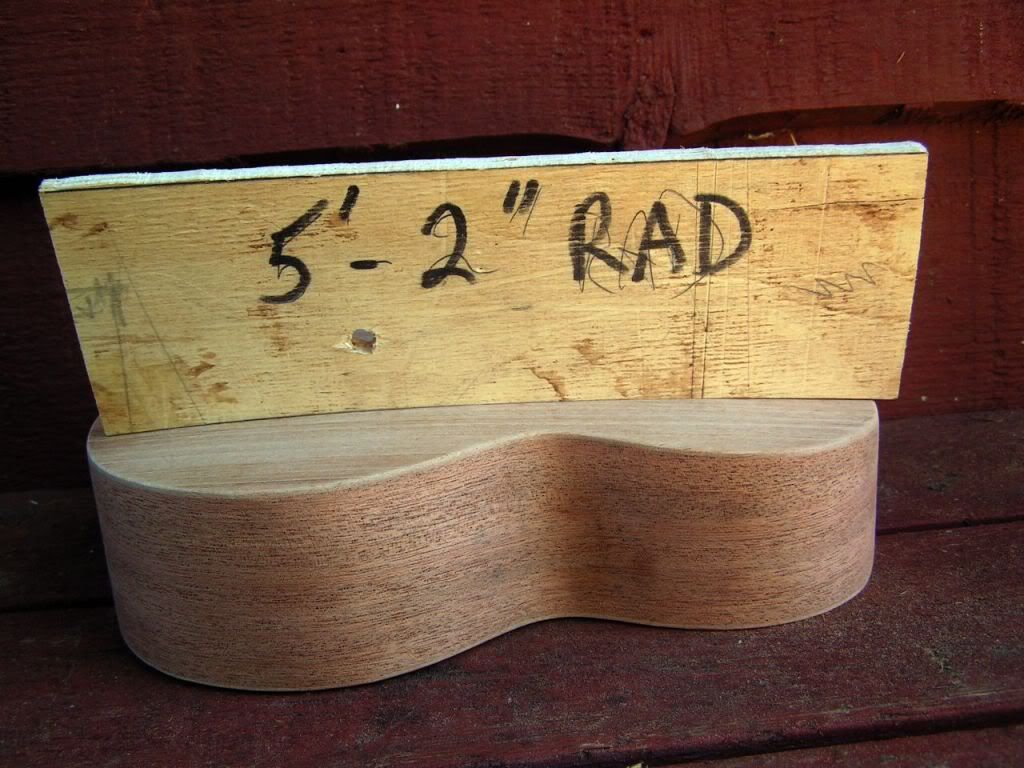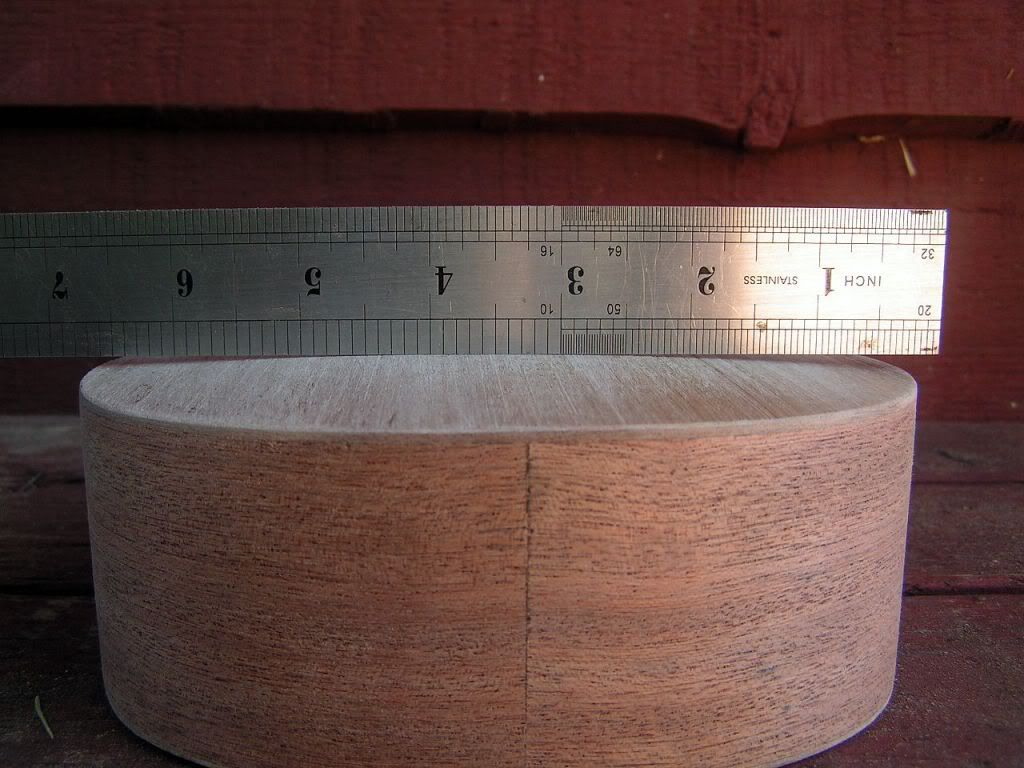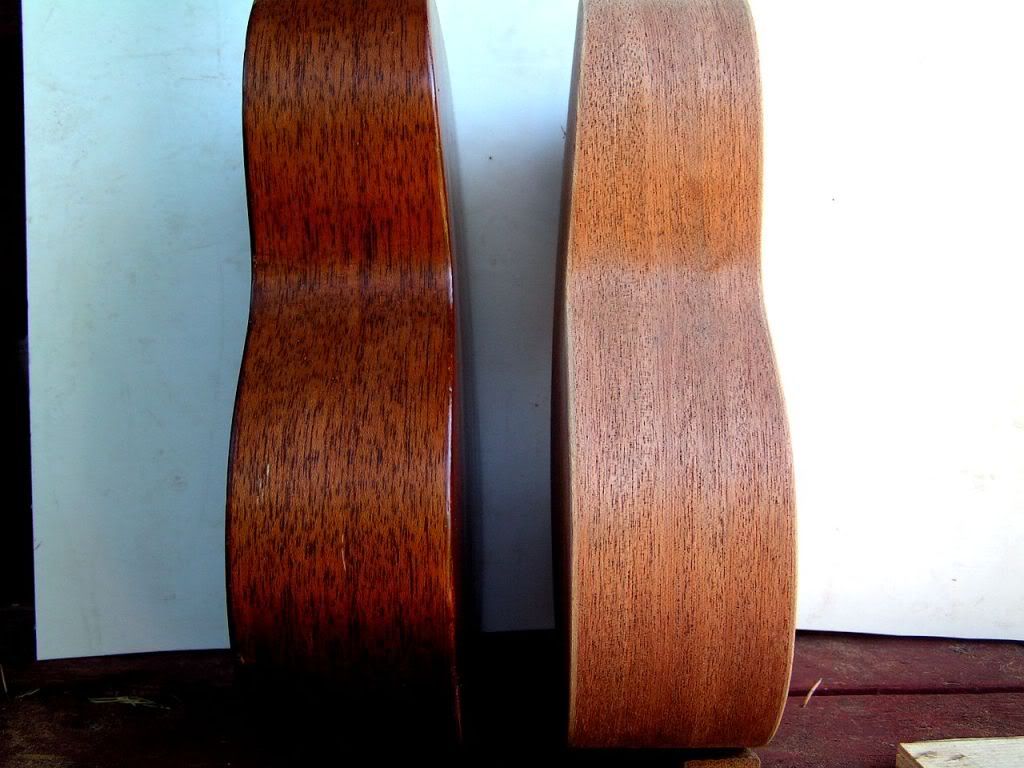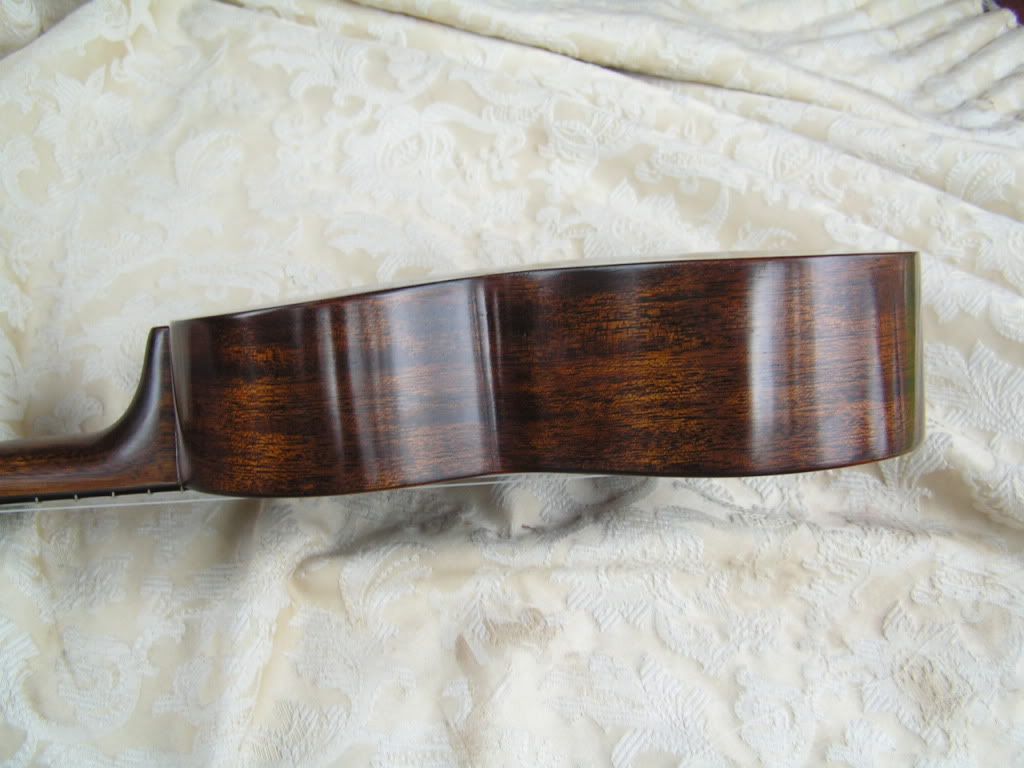Come on Ken, you know I can't do that stuff! The reason I say this is that radius dishes are a releatviely 'new' phenomonen and my knowledge of mid 20th Century building techniques informs me that there was much work done by 'eye' rather than measurement. It is also relevant when you are talking about top thicknesses - yes, these will be all over the place because the obsession for uniformity was absent then since nearly all of the work on these instruments was 'hand' including the bending. It is Taylor, and Collings who almost singlehandedly dragged guitar making and by default ukulele making into the 21st century. The Fox bender was 'invented' in the early 1990's - I saw some of the first results of this now industry standard method of bending. The history of fretted instrument making is one of hand skills right up to 1985 - the emergence of very clever thinkers like Charles Fox and Tom Ribbeke, forward looking companies like LMII and Stewmac have propelled musical instrument making towards 'science and tyechnology' based building in the short time I have been making. When I began in the late 70's in the UK David Dyke as a luthier's suppliers had just started up - before then your only supply line of musical instrument making wood was Sidney Evans in Brum. All of what we do today is the seult of technology moving forward. Vintage instruments are simply amazing for the one single fact that they were rarely put together by engineers - and this is no insult Ken; Bill Collings is and engineer, most of Taylor Guitars developers are engineers. In the old days, the comparable key workers were cabinet makers...
 I should have guessed
I should have guessed  it's 5 foot two...eyes of blue etc: etc:
it's 5 foot two...eyes of blue etc: etc: